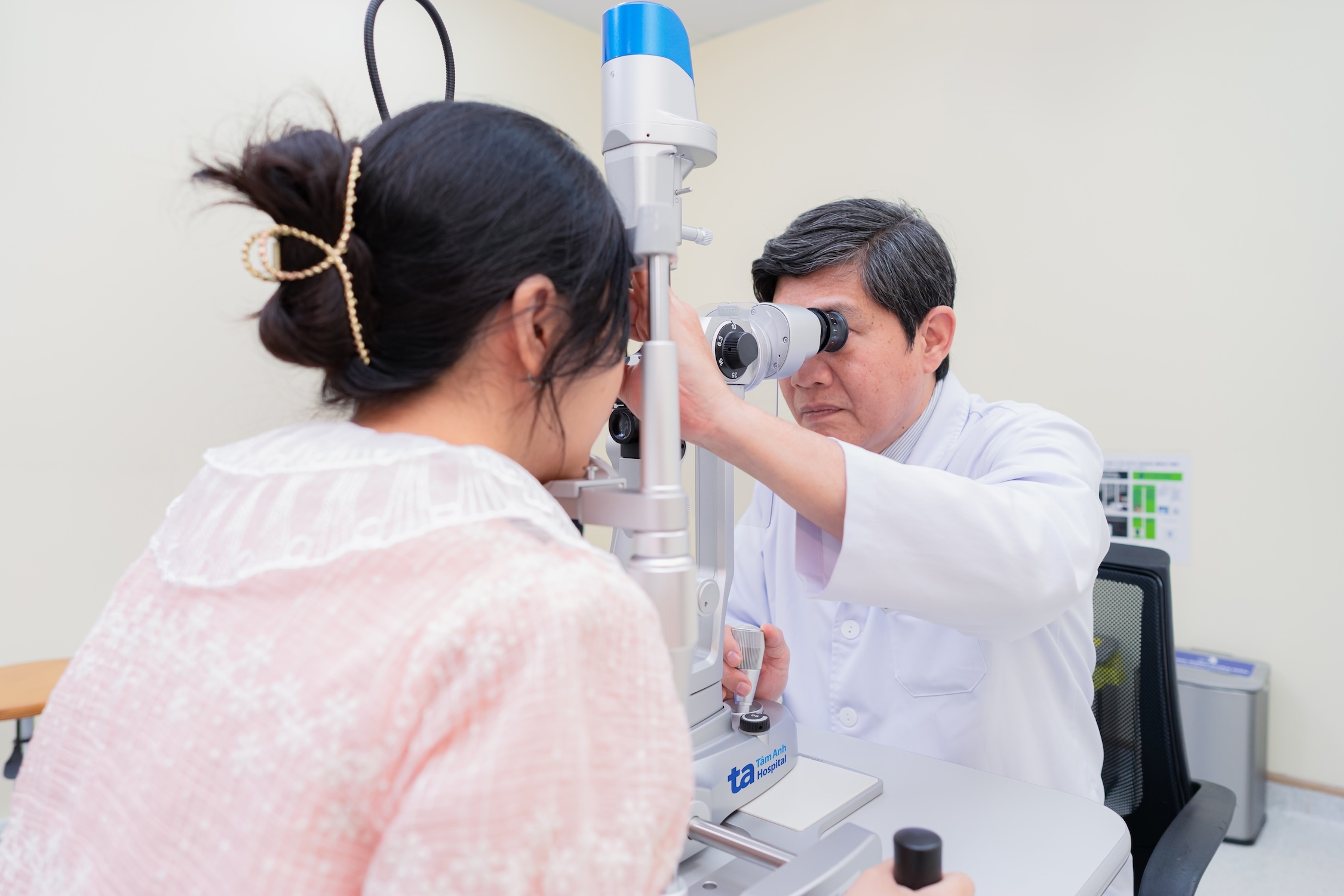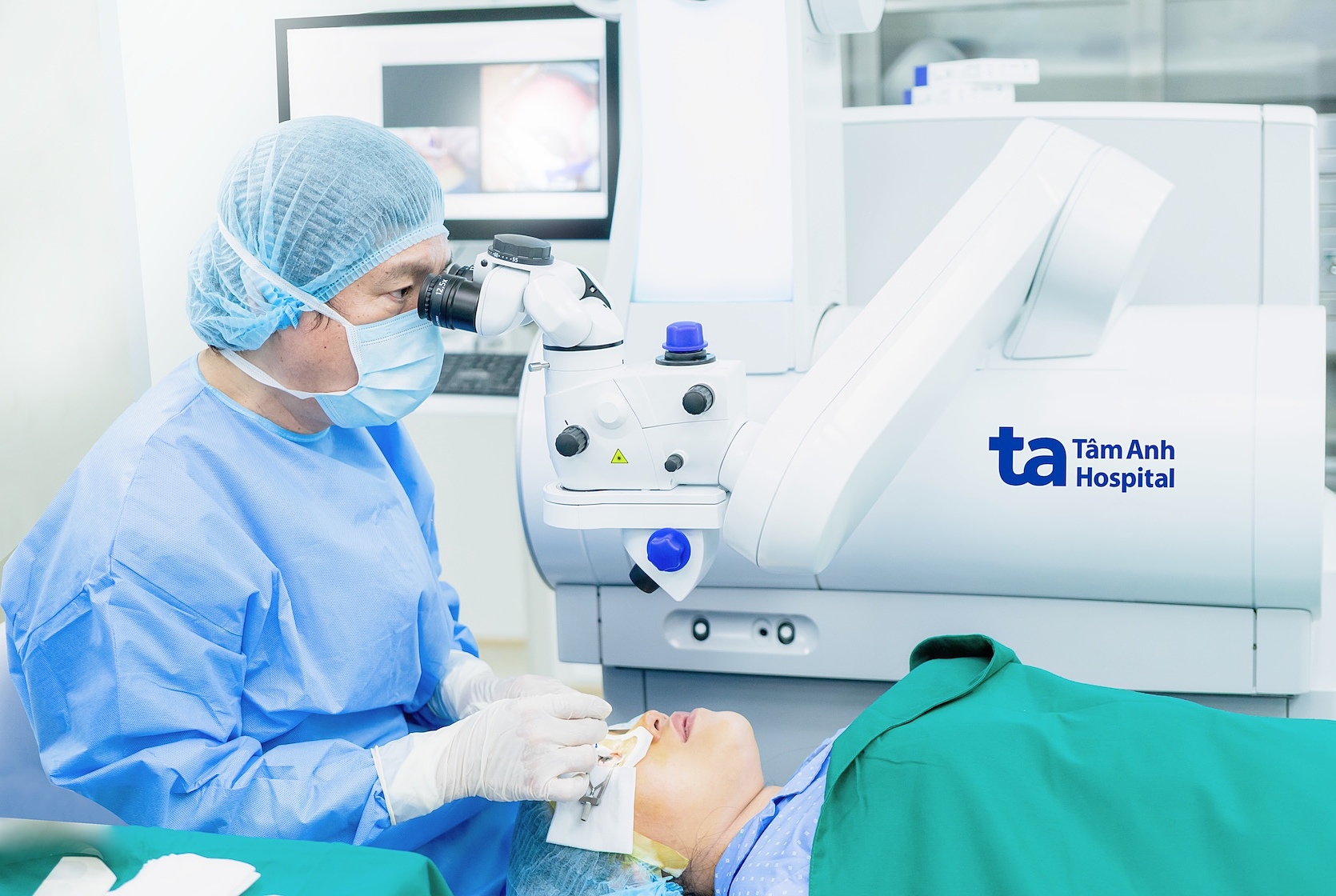Doctor Dinh Trung Nghia, deputy director of the High-Tech Eye Center at Tam Anh General Hospital in Ho Chi Minh City, assessed the thickness and biomechanical strength of Uyen’s corneas using the Corvis ST. He also employed pre- and post-operative corneal topography, ultrasound biomicroscopy to detect potential risks such as vitreous degeneration and retinal tears, and conducted a comprehensive fundus examination.
 |
Doctor Nghia performs a fundus examination. Photo illustration: Tam Anh General Hospital |
Doctor Nghia opted for SMILE Pro, a minimally invasive laser procedure using a femtosecond laser, to correct Uyen’s vision. This technique removes a thin layer of tissue within the cornea through a micro-incision of about 2 mm. This approach reduces dry eye and avoids creating a corneal flap, minimizing complications and shortening recovery time. Just one day after surgery, Uyen's vision improved dramatically from worse than 20/200 to 20/20.
 |
Doctor Nghia performs SMILE Pro surgery on Uyen. Photo: Tam Anh General Hospital |
Doctor Nghia advised proper rest after myopia surgery to promote eye health and reduce the risk of recurrence. For those frequently using computers, he recommended the 20-20-20 rule: every 20 minutes, take a 20-second break and look at something 20 feet (6-7 m) away to reduce eye strain. Regular blinking is also essential to keep the eyes moist and prevent dryness and irritation.
He also suggested using artificial tears regularly for the first 3-6 months to lubricate and help restore the ocular surface, a common concern after laser surgery. Finally, maintaining a healthy lifestyle with adequate sleep (7-8 hours per night) and avoiding late nights helps prevent prolonged eye strain, a factor that can increase the risk of myopia recurrence after surgery.
Duc Tri
| Readers can submit questions about eye diseases here for doctor's answers. |












